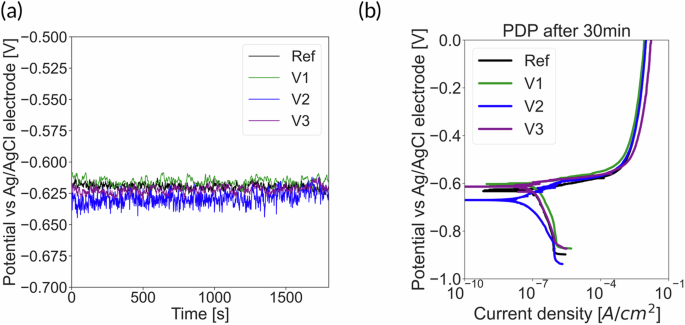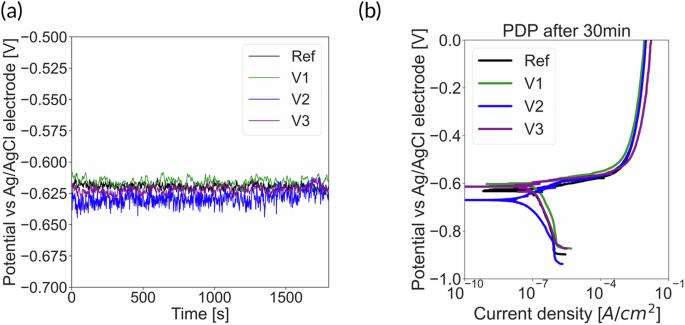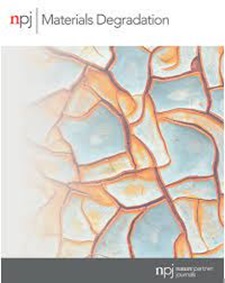再循环对挤压成型的 AA6063 合金局部腐蚀敏感性的影响
IF 7.6
2区 材料科学
Q1 MATERIALS SCIENCE, MULTIDISCIPLINARY
引用次数: 0
摘要
通过统计处理不同技术(如 SEM、EDS 和 SKPFM)所表征的微观结构的量化方法,可以更深入地了解回收 AA6063 对局部腐蚀敏感性的影响。特别是系统地记录、测量和分析了金属间颗粒和两种局部腐蚀形式--点蚀和晶间腐蚀。即使是在合金回收过程中引入的微量铜和锌也会对局部腐蚀敏感性产生显著影响。研究发现,两种局部腐蚀的起始和早期演变是相互竞争的,其中一种腐蚀比另一种腐蚀占优势与合金的成分和微观结构密切相关。痕量铜含量较高的回收变体使合金更容易受到点蚀侵蚀,而痕量锌含量较高的合金则更容易受到 IGC 侵蚀。痕量的高锌添加对点蚀敏感性有特别有利的影响,因为即使在痕量铜含量较高的合金中,它也能降低点蚀的可能性。本研究获得的 SKPFM 结果为金属间颗粒周围的圆周点蚀敏感性提供了依据,因为较高的伏安电位差 (∆V) 意味着较高的腐蚀驱动力。不同变体之间的 ∆V 差异可根据微观结构中的痕量回收元素分布得到进一步解释。本文章由计算机程序翻译,如有差异,请以英文原文为准。


The influence of recycling on the localized corrosion susceptibility of extruded AA6063 alloys
An approach involving the quantification of microstructure characterized by different techniques such as SEM, EDS, and SKPFM is statistically treated to provide a deeper insight into the influence of recycling AA6063 on localized corrosion susceptibility. Particularly, the intermetallic particles and the two forms of localized corrosion – pitting and intergranular corrosion are systematically documented, measured, and analyzed. Even trace amounts of Cu and Zn introduced into the alloy from recycling had a remarkable effect on the localized corrosion susceptibility. The study found that the initiation and early evolution of the two localized corrosions are in competition, and the predominance of one over the other is closely linked to the composition of the alloy, and microstructure. Recycled variants with higher trace Cu made the alloy more susceptible to pitting attack whereas higher trace Zn is linked with greater IGC susceptibility. The trace amount of higher Zn addition has a particularly beneficial effect on pitting susceptibility as it reduces the likelihood of pitting even in alloys with a higher trace Cu content. The SKPFM results obtained in this study provided a basis for the circumferential pitting susceptibility around intermetallic particles, as a higher volta potential difference (∆V) implied a higher driving force for corrosion. ∆V differences between the different variants were further explained based on trace recycled element distribution in the microstructure.
求助全文
通过发布文献求助,成功后即可免费获取论文全文。
去求助
来源期刊

npj Materials Degradation
MATERIALS SCIENCE, MULTIDISCIPLINARY-
CiteScore
7.80
自引率
7.80%
发文量
86
审稿时长
6 weeks
期刊介绍:
npj Materials Degradation considers basic and applied research that explores all aspects of the degradation of metallic and non-metallic materials. The journal broadly defines ‘materials degradation’ as a reduction in the ability of a material to perform its task in-service as a result of environmental exposure.
The journal covers a broad range of topics including but not limited to:
-Degradation of metals, glasses, minerals, polymers, ceramics, cements and composites in natural and engineered environments, as a result of various stimuli
-Computational and experimental studies of degradation mechanisms and kinetics
-Characterization of degradation by traditional and emerging techniques
-New approaches and technologies for enhancing resistance to degradation
-Inspection and monitoring techniques for materials in-service, such as sensing technologies
 求助内容:
求助内容: 应助结果提醒方式:
应助结果提醒方式:


